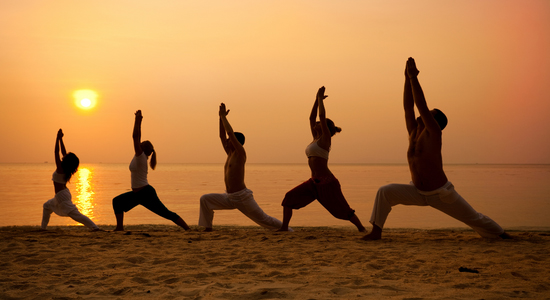
Yoga


The Yoga and Ayurveda philosophy believes that the human body is composed of five elements- fire, air, water, space and earth. As long as these elements remain in balance, a person enjoys a healthy, disease free life.
Yoga
Yoga is a Sanskrit word translated as “yoke” or “union.” To yoke means to draw together, to bind together; or to unite. Its aim is to yoke or create a union of the body, mind, soul, and universal consciousness. This process of uniting the physical, mental, emotional, and spiritual aspects of ourselves is what allows yogis to experience deep states of freedom, peace and self-realization.


Benefits of Yoga
Yoga is an ancient system of physical, mental and spiritual practices that have been passed down through the generations from teacher to student. Yogic practices include breathing techniques, postures, relaxation, chanting, and other meditation methods. There are many different styles of yoga, each with their own unique focus and approach to creating a unitive state. Its origins are traced back thousands of years to the Upanishads, a collection of yogic texts dating from roughly 800 BC to 400 AD. While the word “yoga” was first mentioned in the Rigveda, but the first time it was used with its modern meaning is in the Katha Upanishad.
Benefits of Yoga
This ancient spiritual text was written sometime between the 5th and 3rd century BCE. The Yoga Sutras is one of the most famous text on the fundamentals of yoga and was written by Patanjali around 200 BCE. In this foundational text, he defines yoga in sutra 1.2 as: yogash chitta-vritti-nirodhah. This translates as “Yoga is the cessation of the whirling fluctuations of the mind.” This cessation of thoughts is the result of a dedicated and consistent practice of yoga. By calming our mental chatter, this contemplative practice connects to the source of our being where we can experience the unity of our own self, as well as the unity of everything else around us.



